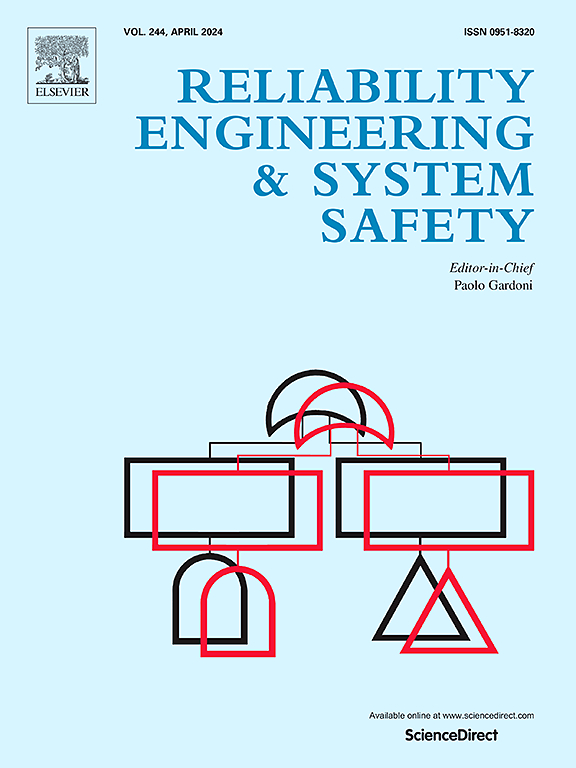A novel computational framework for efficient nuclear containment design: Structural integrity, radiation shielding, and reliability assessment
IF 9.4
1区 工程技术
Q1 ENGINEERING, INDUSTRIAL
引用次数: 0
Abstract
This research introduces a novel, multidisciplinary framework for the design of nuclear containment structures (NCS), integrating radiation shielding, structural integrity, and reliability assessment. Unlike conventional approaches, this study uniquely incorporates moment-curvature (M-ϴ) analysis for structural evaluation, Monte Carlo (MC) simulations for radiation shielding performance, and reliability analysis to ensure robust and efficient design. Radiation shielding studies showed that primary particles' effective dose rate (EDR) varies significantly with rebar configurations, while secondary particle EDR remains constant, decreasing only with increased section thickness. A novel SD factor was introduced to quantify the impact of rebar spacing and size on primary EDR values, providing a new metric for optimizing shielding efficiency. M-ϴ analysis identified 37 configurations with equivalent yield moments for targeted strength levels. Optimal rebar configurations for each section thickness were identified, with changes in rebar configurations leading to up to 56.85 % variation in EDR, emphasizing the role of rebar in enhancing radiation shielding. Reliability analysis identified a 1.3 m section with 44 mm rebar at 195 mm spacing as ideal, ensuring 99.74 % (β=2.7995) reliability in maintaining safe EDR levels. These findings provide essential insights for standardized NCS guidelines that prioritize strength and radiation shielding for safer, efficient designs.
求助全文
约1分钟内获得全文
求助全文
来源期刊

Reliability Engineering & System Safety
管理科学-工程:工业
CiteScore
15.20
自引率
39.50%
发文量
621
审稿时长
67 days
期刊介绍:
Elsevier publishes Reliability Engineering & System Safety in association with the European Safety and Reliability Association and the Safety Engineering and Risk Analysis Division. The international journal is devoted to developing and applying methods to enhance the safety and reliability of complex technological systems, like nuclear power plants, chemical plants, hazardous waste facilities, space systems, offshore and maritime systems, transportation systems, constructed infrastructure, and manufacturing plants. The journal normally publishes only articles that involve the analysis of substantive problems related to the reliability of complex systems or present techniques and/or theoretical results that have a discernable relationship to the solution of such problems. An important aim is to balance academic material and practical applications.
 求助内容:
求助内容: 应助结果提醒方式:
应助结果提醒方式:


